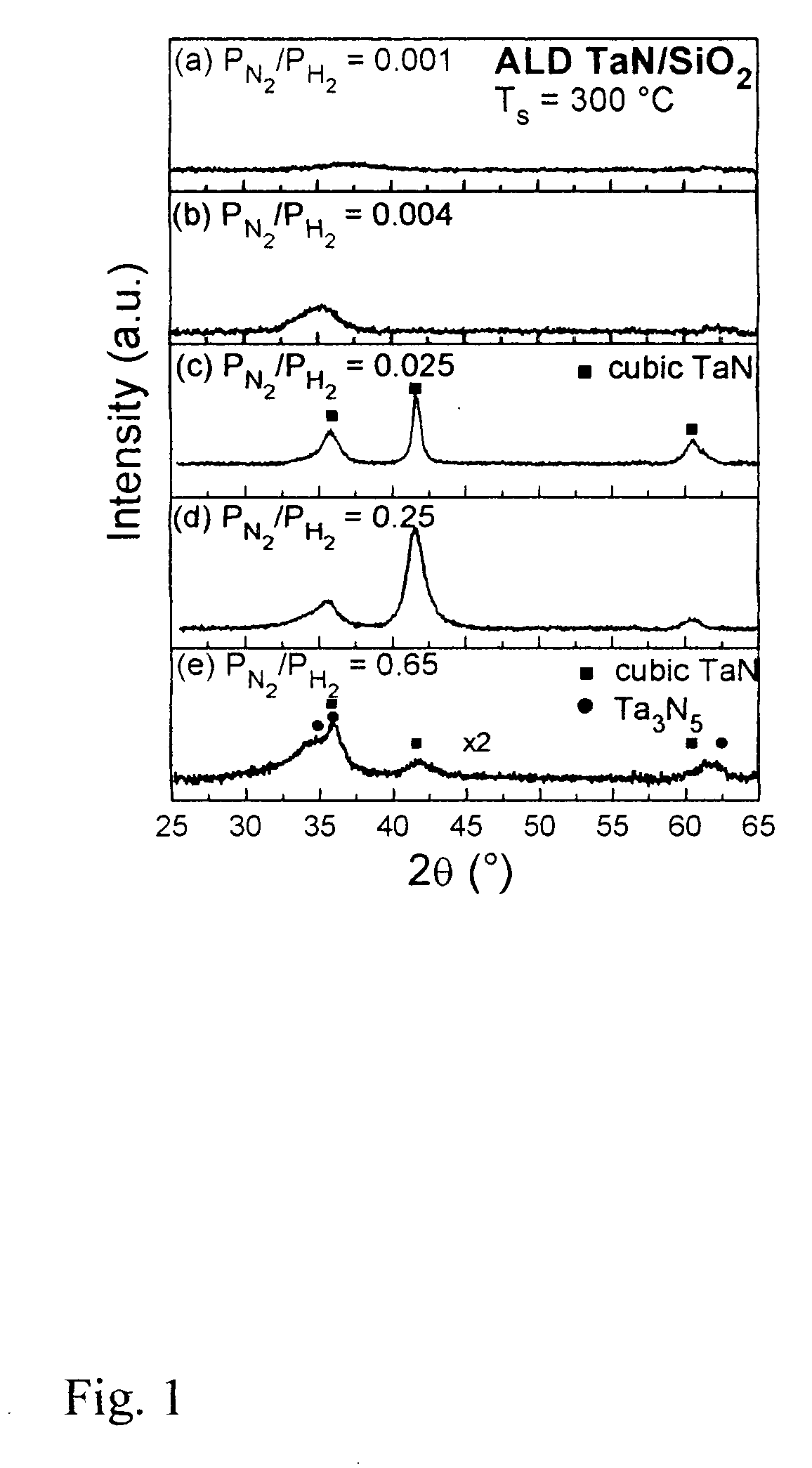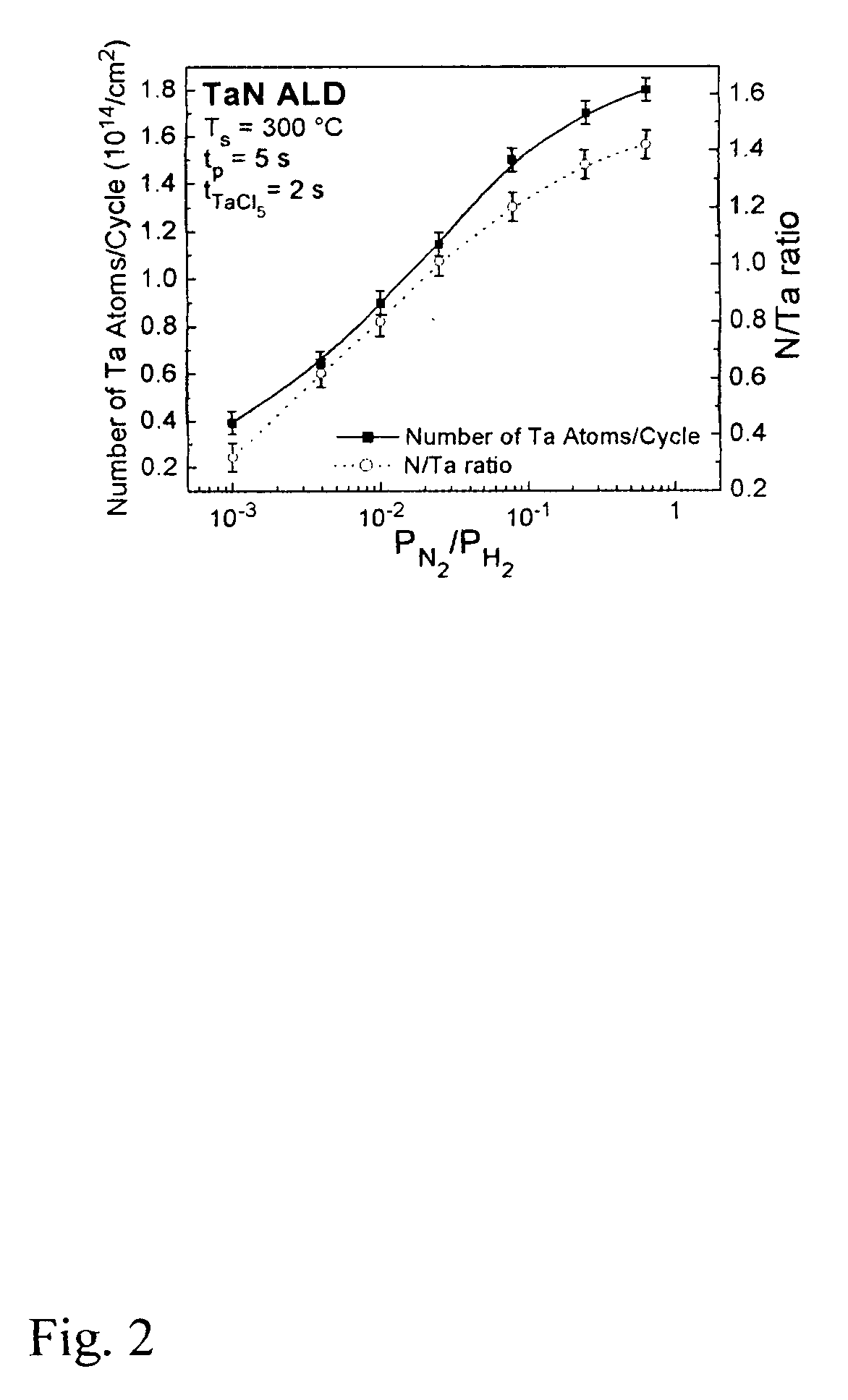Plasma enhanced ALD of tantalum nitride and bilayer
a technology of tantalum nitride and enhanced ald, which is applied in the direction of plasma technique, semiconductor/solid-state device details, superimposed coating process, etc., can solve the problems of low the use of pvd technologies for these layers is not expected to be applicable for technologies using nodes less than approximately 45, and the failure of ald of ta and tan as a bilayer is only rar
- Summary
- Abstract
- Description
- Claims
- Application Information
AI Technical Summary
Benefits of technology
Problems solved by technology
Method used
Image
Examples
example
[0030] Tantalum nitride films are grown typically with TaCl5 exposure time of 2 seconds and plasma exposure time of 5 seconds, which correspond to saturation condition of ALD. This saturation is due to the self-limited adsorption of the precursor. The total time for one cycle is typically 12 seconds including the evacuation time after TaCl5 and plasma exposures. The hydrogen partial pressure during exposure is set as 2.5×10−3 Torr and nitrogen partial pressure is changed. The total pressure (argon and TaCls vapor) during TaCl5 exposure is constant at 3.0×10−2 Torr. A typical number of cycles is 50-800 to produce tantalum nitride films with thicknesses in the range of 20 to 400 Angstroms, depending upon growth conditions.
[0031]FIG. 1 illustrates X-ray diffraction (XRD) results of PE-ALD TaNx grown at Ts=300° C. At low nitrogen partial pressure (nitrogen to hydrogen partial pressure ratio=0.001), the XRD spectrum shows a broad peak at approximately 2θ=38°. For a higher partial pressu...
PUM
| Property | Measurement | Unit |
|---|---|---|
| temperature | aaaaa | aaaaa |
| temperature | aaaaa | aaaaa |
| temperature | aaaaa | aaaaa |
Abstract
Description
Claims
Application Information
 Login to View More
Login to View More - R&D
- Intellectual Property
- Life Sciences
- Materials
- Tech Scout
- Unparalleled Data Quality
- Higher Quality Content
- 60% Fewer Hallucinations
Browse by: Latest US Patents, China's latest patents, Technical Efficacy Thesaurus, Application Domain, Technology Topic, Popular Technical Reports.
© 2025 PatSnap. All rights reserved.Legal|Privacy policy|Modern Slavery Act Transparency Statement|Sitemap|About US| Contact US: help@patsnap.com



